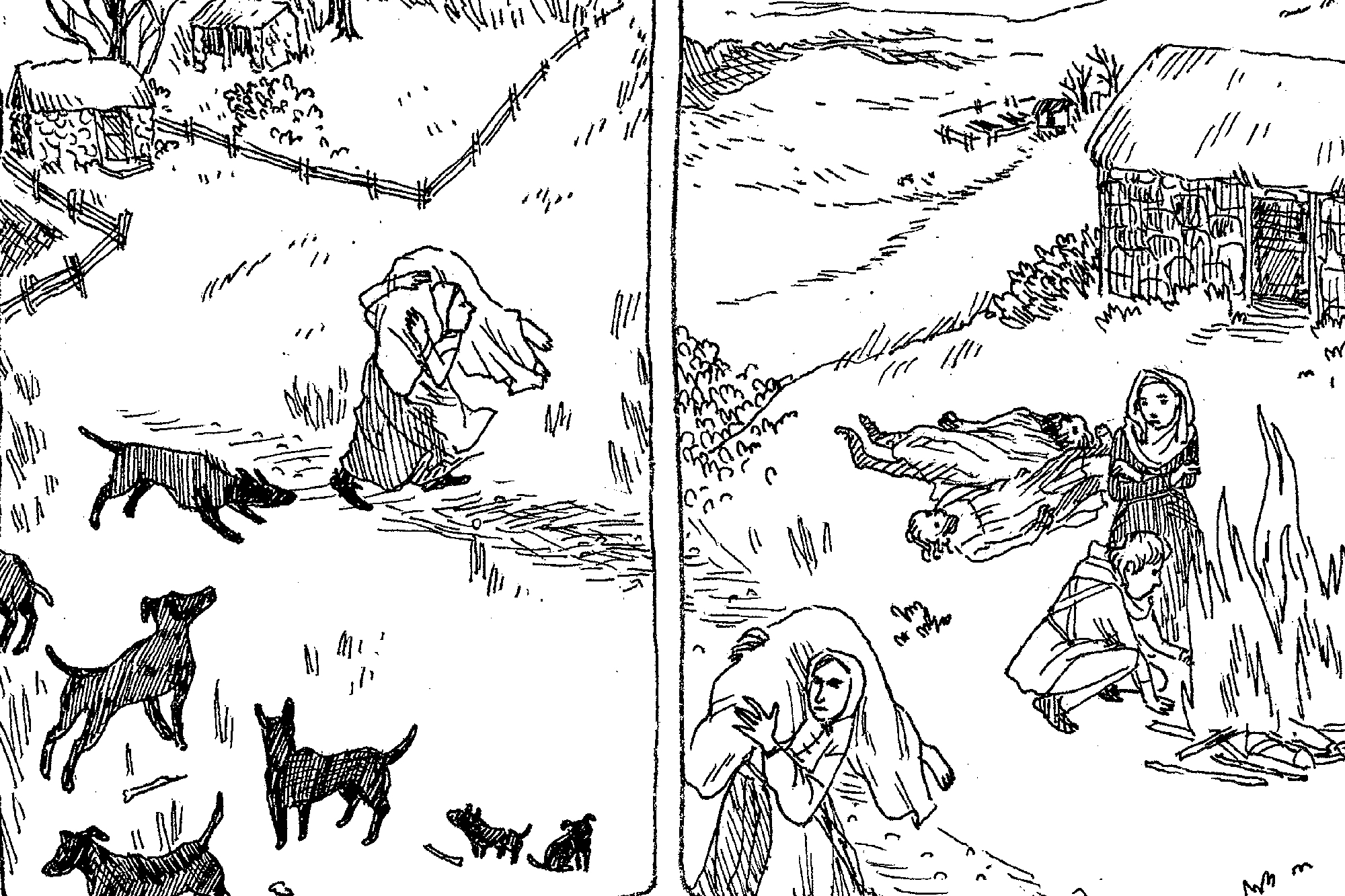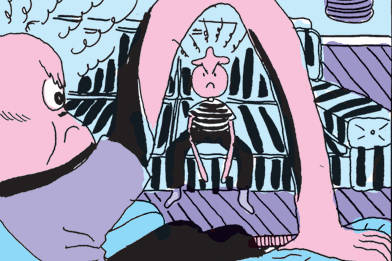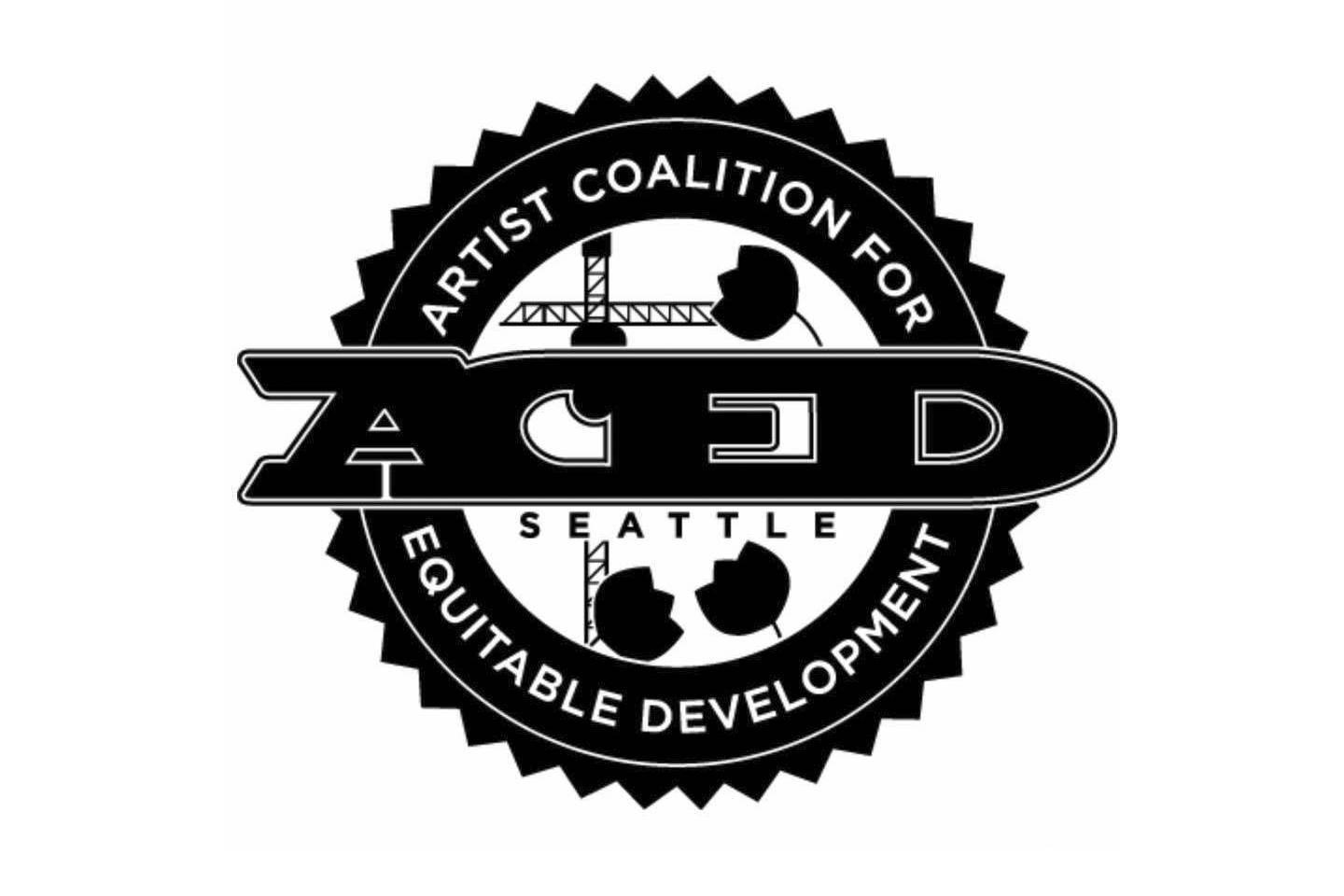People have a tendency to declare our modern times “the worst it’s ever been.” But, hey, have you thought about the Black Death lately? Ninety years long, 75 to 200 million dead, necrosis and buboes?
Julia Gfrörer, a comic artist who always notes in her bios that her “last name rhymes with despair,” certainly has. A Cornish College of the Arts grad now living on the East Coast, Gfrörer is one of the most devastating graphic storytellers we have right now, thanks in part to her willingness to dive headfirst into the shadows—which many of her books, like Too Dark to See and her 2014 Fantagraphics debut Black is the Color, telegraph through their titles. Wielding the gothic, unsettling beauty of her thin line work, she often juts the paranormal—witches, vampires, spirits—up against the mundane, plumbing deep into the well of human suffering. Love, death, and desolation are never far apart in her work.
Laid Waste, her second graphic novella through Fantagraphics, was inspired by a 14th-century firsthand account of the bubonic plague Gfrörer stumbled upon, written by Italian shoemaker and tax collector Agnolo di Tura. “They would swell beneath the armpits and in the groin, and fall over while talking. Father abandoned child, wife husband, one brother another. None could be found to bury the dead for money or friendship. Members of a household brought their dead to a ditch as best they could, without priest, without divine offices.”
Laid Waste zooms in on a woman named Agnés, born in a medieval hamlet amid the ravages of the disease. The book begins with Agnés’ mother confronting two personifications of death—a robed, crowned skeleton and an angel—who are trying to take the infant Agnés into the afterlife. Fainting after the encounter, the mother awakens to find Agnés has disappeared. Moments later, she runs to the cemetery, claws up a grave, and finds baby Agnés, somehow still breathing. As the book progresses to Agnés’ adulthood, we’ll find out that her supernatural resistance to death is both a blessing and an existential burden.
The book is, unsurprisingly, incredibly bleak. Agnés’ is a quiet devastation. Her walks through town are punctuated with children burning their dead parents’ bodies, dogs gnawing on decomposing limbs, and pits of corpses, to which Agnés will add her sister’s body and the body of her neighbor Giles’ wife. Gfrörer’s masterful emotional juxtaposition reaches a crushing zenith here. In one of the most brutal sequences of her career, we watch Agnés plainly and dutifully pound dough into bread as the world around her is subsumed by the darkness, until she breaks down sobbing, begging Saint Catherine for her own death. Soon follows the most heart-rending, nihilistic sex scene you’ll probably ever read, in the midst of which Agnés quips, “Nothing matters at all.” Despite everything I’ve just written, Laid Waste is, counterintuitively, a life-affirming glimpse into the void. There is a dim, faint light at the end of this hellish tunnel, one we’re lucky Gfrörer is brave enough to illuminate with her piercing humanity. Great post-election reading. $15. Out now on Fantagraphics.








